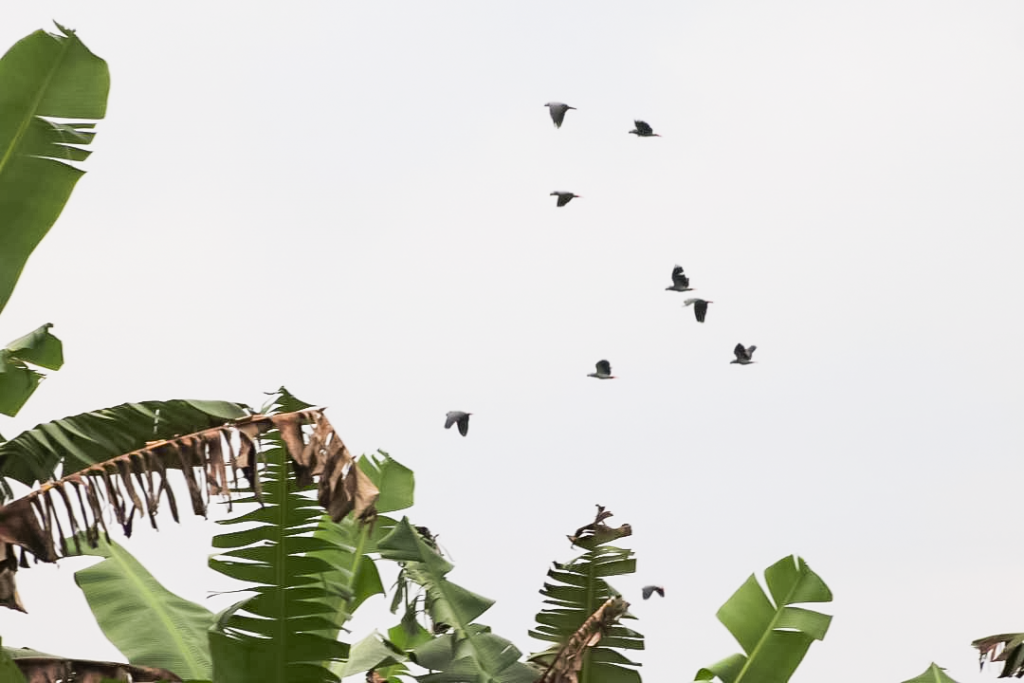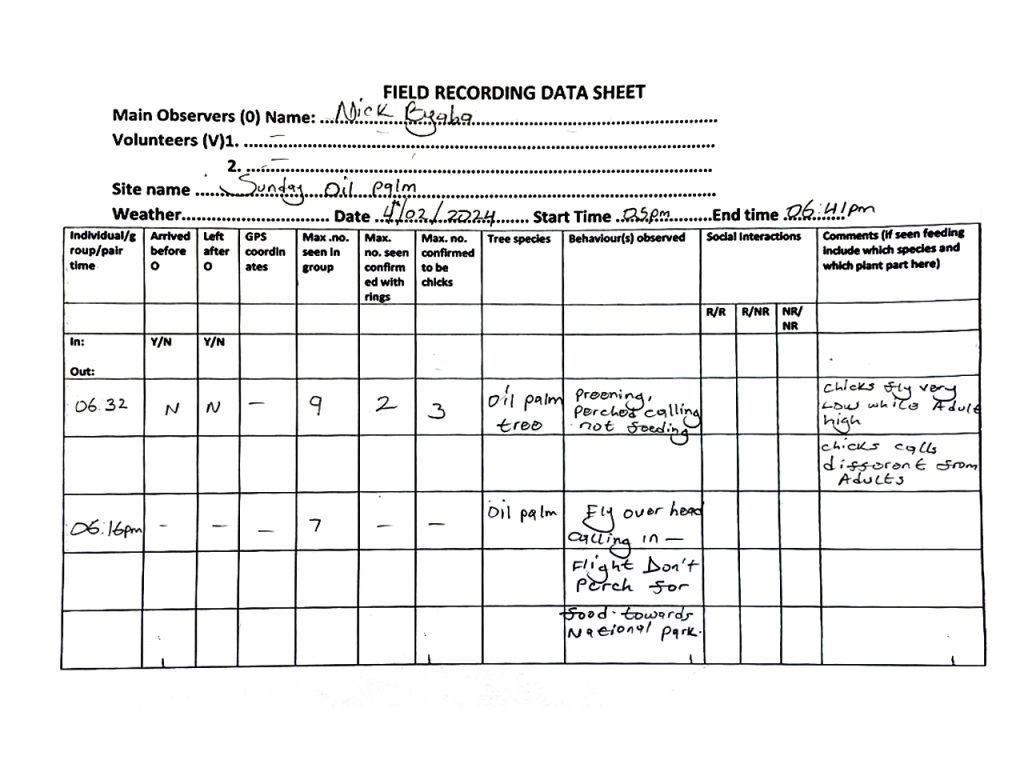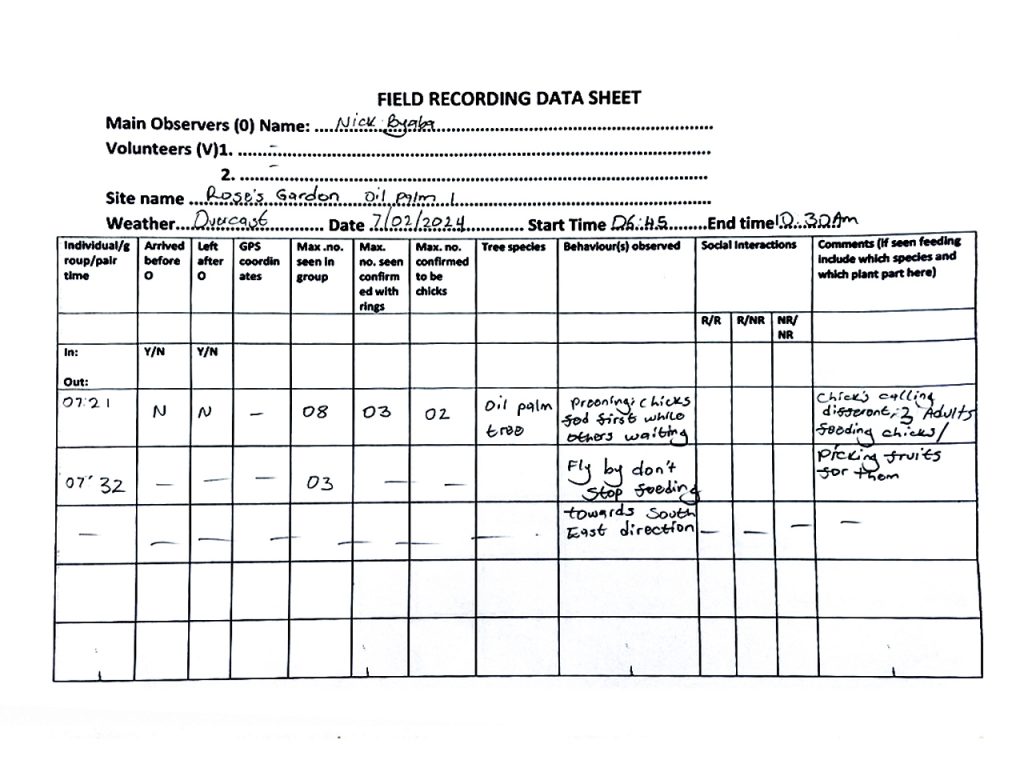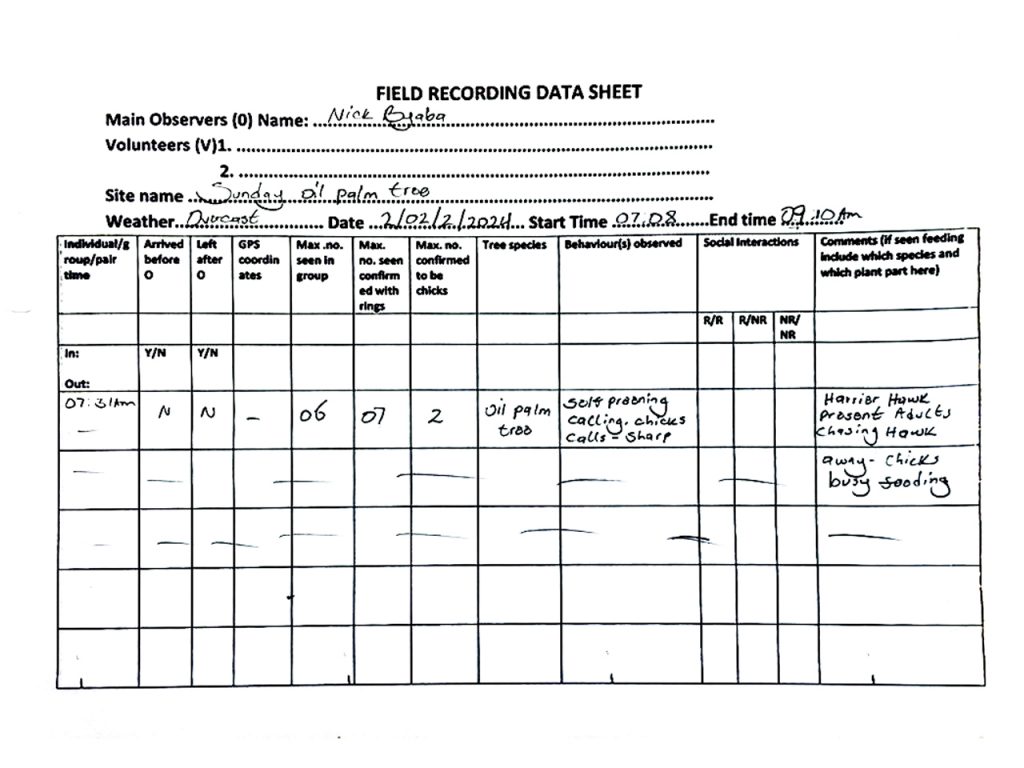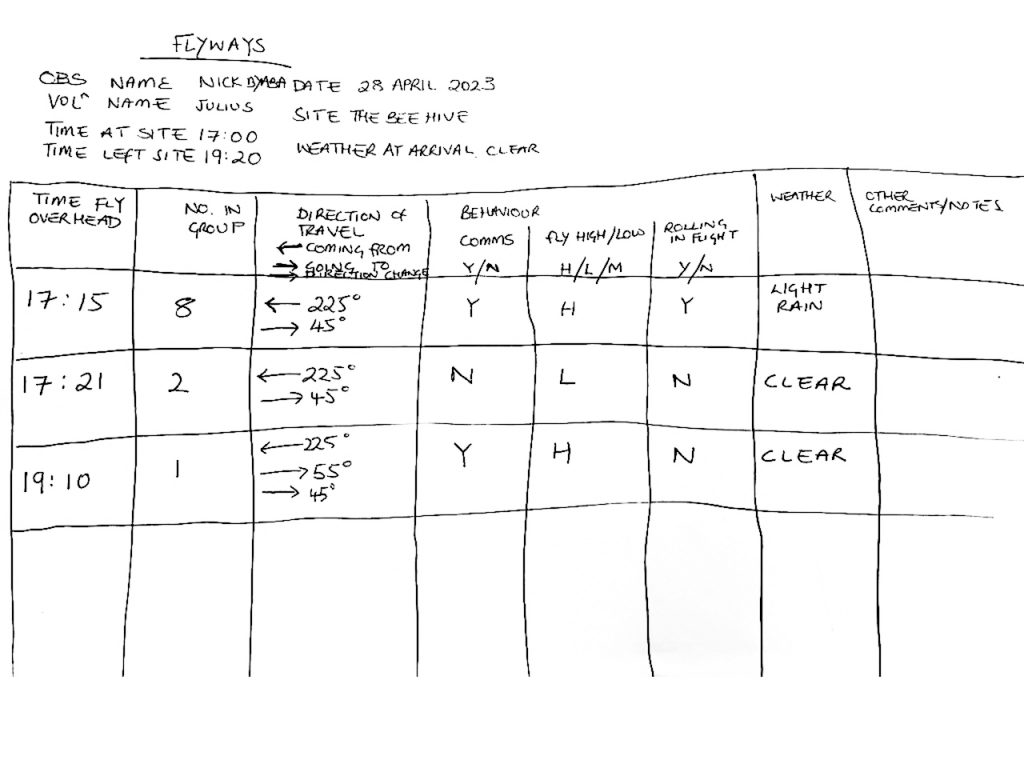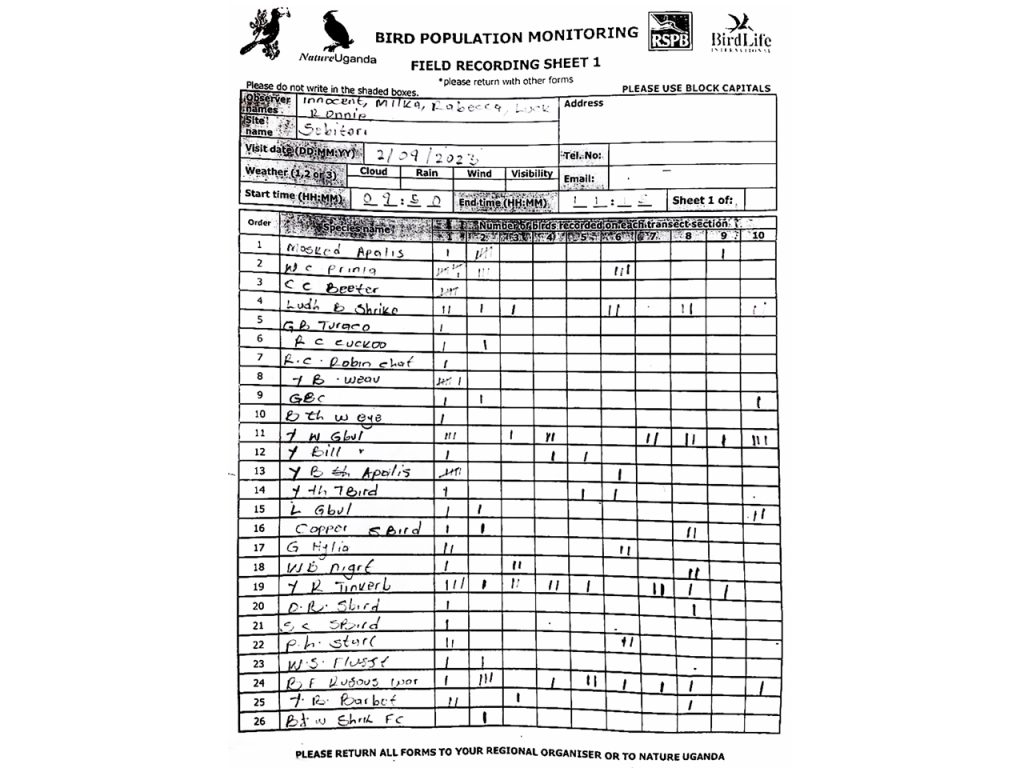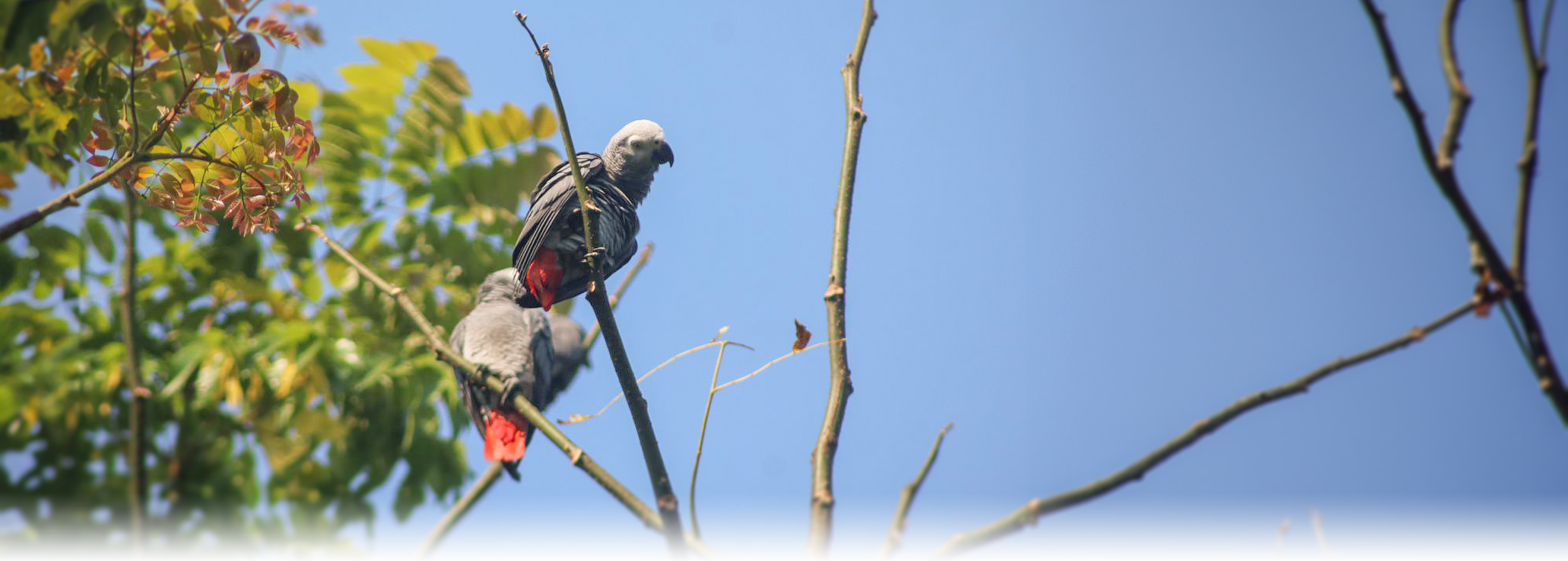
Monitoring and Research
In collaboration with the Sunbird Hill team and the Bigodi Wetlands community, we started a monitoring programme of the flyways and flying patterns of grey parrots from the national park to their feeding places and back. Another data sheet covers the behaviours and interactions of ringed and non-ringed parrots and their interactions with other wildlife.
We also do tree phenology of the possible feeding trees to determine the foraging trends of the grey parrots.
Nick talks about challenging in monitoring
Grey parrots flying freely in their natural environment
What We Discovered
The data sheets we designed cover the flyways/routes taken by parrots going and returning from feeding as well as estimating the group sizes; the maximum of 256 grey parrots in a group has been recorded.
Another data sheet covers the feeding sites and we collect the behaviours shown by parrots while feeding, as well as interactions between ringed and non-ringed parrots.
Many other fascinating things were recorded, for example:
- The mimicking of other birds to avoid predators and chase away competitors during feeding.
- The mimicking of the African wood owl, the red-chested cuckoo and the western black oriole.
- Rolling in flight has also been observed during flyway monitoring and we are still wondering why they do this; is it over-excitement?
A team of four lead monitors, helped by volunteers from different organizations around Bigodi Town, work in a rotational form around the feeding places and flyways, collecting data every Monday morning and evening.
A growing Population
We have observed a gradual increase in the number of grey parrot chicks since we started monitoring. We have also seen more parrots coming to the feeding places and the interactions between the ringed and non-ringed parrots give us hope for an increase in the number of parrots in the future.
